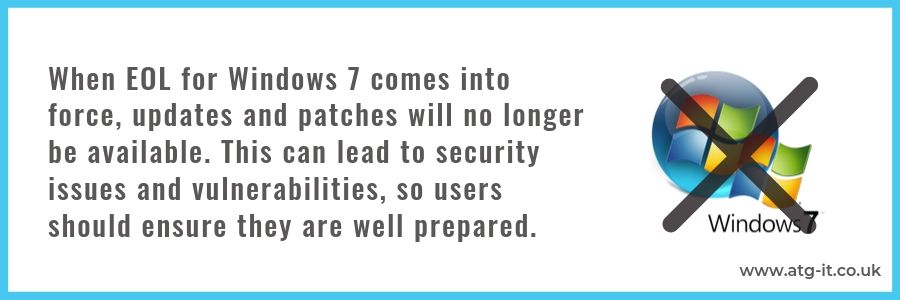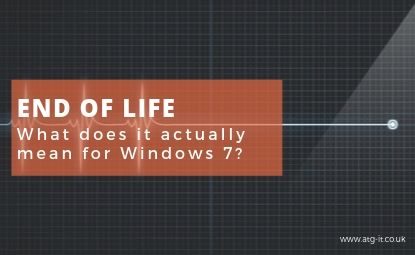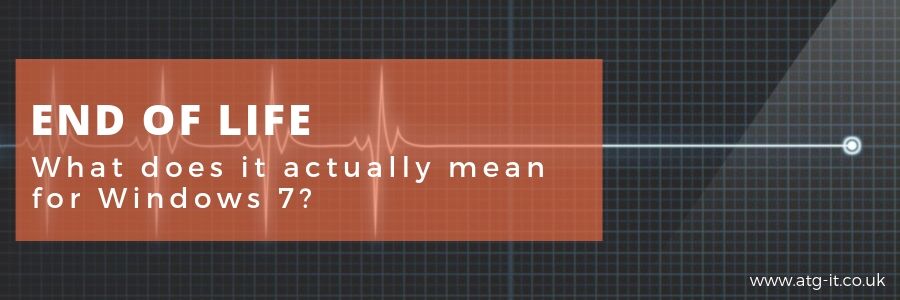What does EOL mean?
When a manufacturer or vendor decides that a product has reached the end of its useful life, they will make a decision to stop selling or updating it. Customers will then have a timeframe in which to prepare for the EOL.
In the case of software, EOL usually happens because the company has developed and improved upon the older version, making it outdated and obsolete. They will market the upgraded software as a better option. While users of the older software will still be able to run it, they’ll be missing out on the benefits of the newer iteration.
How does that affect Windows 7 products?
Microsoft routinely replaces their software with updated versions, with better functionality, new tools and applications and try to improve the user interface to make it more accessible and simpler to use.
They announced end of life for Windows 7 earlier this year, with the date of 14 January 2020 as the point when they will no longer support laptops and desktop machines running this version of their software.
This means that they will no longer offer updates to users of Windows 7, but more significantly, they will not release any new patches, which can lead to security issues and vulnerability to hacks, viruses and other types of threat. Indeed, hackers will often strike after the EOL date, knowing that users are no longer protected.
When there are no new updates available, users can expect to see a loss of functionality and slower speeds, and you won’t be able to take advantage of any new programmes or applications Microsoft might introduce in future.
Other programme developers will also no longer be offering updated versions of their solutions to users of Windows 7, and Microsoft have also been working to replace Internet Explorer with Edge, a more intuitive browser with greater integration options.

What should you do to prepare for Windows 7 EOL?
New machines will come with Windows 10 installed as standard, and you won’t be able to downgrade to Windows 7. If you try to buy a copy of Windows 7, it won’t be available from reputable retailers or resellers, and you’ll have to purchase a second-hand copy, which will be vulnerable to all the problems we’ve outlined.
Microsoft have worked hard to develop a better version of their operating system and applications, and any bugs and problems with Windows 10 have been resolved now, in the four years since it was introduced.
With three months to go until Windows 7 EOL, you’ve got still got time to find out the best way to upgrade to 10. Microsoft will send reminders to all your machines to prompt you to make the updates.
Speak to your IT department, whether in-house or external, to discuss how to make the necessary changes. They can help you back everything up, assess your devices to make sure they meet the specification requirements and that you have everything else you need, including compatibility with other programmes and antivirus solutions. You can also research online for advice, particularly on the Microsoft site.
It’s worth noting, however, that if you don’t have the time or money to upgrade to Windows 10 just yet, Microsoft are allowing users of Windows 7 Enterprise and Professional versions to have security updates until January 2023. However, there will be a cost for this, and paying for three years of updates may be costlier than paying for the latest version.
If you are concerned about how the Windows 7 EOL will affect the day-to-day running of your organisation, give us a call. We will be happy to answer any of your queries and help you retain business continuity.



You must be logged in to post a comment.